The Beauty of Inflections

What was emerging at the turn of the twentieth century in poetry and the other arts was a growing sense of a unique perspective on modernity based on the expansive dynamism of American society. Pound famously charged American poets to “make it new,” but his dictum applies as well to the country as a whole, which put a premium on energy, innovation, and raw vitality.
Modern American poetry existed in a ceaseless contrapuntal relationship to the restless society of which it was a part. This was a literature that grappled incessantly with what it meant to be modern—and American modern at that. The root of being modern meant the acceptance of great, tumultuous changes, not just in how Americans lived but in the way they experienced and dealt with the new conditions of life.
William Carlos Williams captured the moment with his long poem “Paterson” (serially published from 1946 to 1958), in which he proclaimed, “No ideas but in things.” His poem struck a note in which the sheer materiality of American life—the sense that the nation hummed with power—was both a threat and an opportunity to those daring enough to accept the forces of modern life.
While poets like Hart Crane or Wallace Stevens sought to control these forces through art itself, Robert Frost led a counterattack that used the old world of pastoral New England as a lens through which he contemplated modern themes of alienation, ambivalence, and unbelief. Frost is the ultimate oxymoron as a poet: a completely modern traditionalist. And so it went throughout the century: a constant ebb and flow as poets responded to both the society and to each other.
“What is our innocence,
what is our guilt? All are
naked, none is safe.”
Marianne Moore
From “What Are Years?”, 1941

Harold Hart Crane 1899–1932
Carl Schmitt (1889–1989)
Oil on metal support, after 1917
Read More →
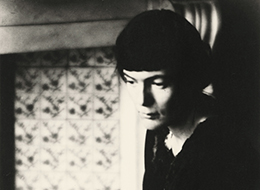
Hilda Doolittle 1886–1961
Man Ray (1890–1976)
Gelatin silver print, c. 1925 (printed 1975)
Read More →
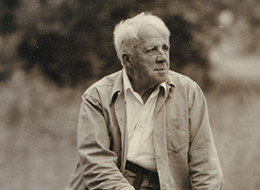
Robert Frost 1874–1963
Clara Sipprell (1885–1975)
Gelatin silver print, c. 1955
Read More →
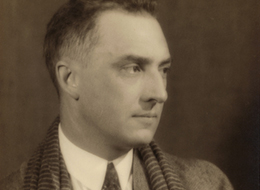
William Carlos Williams 1883–1963
Man Ray (1890–1976)
Gelatin silver print, 1924
Read More →
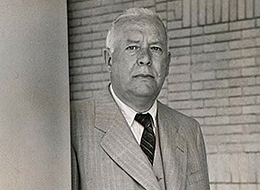
Wallace Stevens 1879–1955
Rollie McKenna (1918–2003)
Gelatin silver print, 1952
Read More →
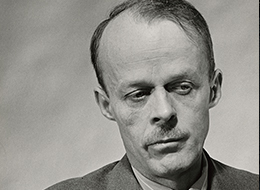
Allen Tate 1899–1979
Hans Namuth (1915–1990)
Gelatin silver print, 1952
Read More →
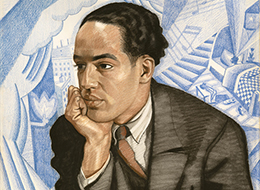
Langston Hughes 1902–1967
Winold Reiss (1886–1953)
Pastel on illustration board, c. 1925
Read More →
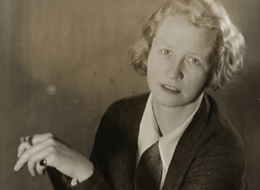
Edna St. Vincent Millay 1892–1950
Berenice Abbott (1898–1991)
Gelatin silver print, c. 1929
Read More →
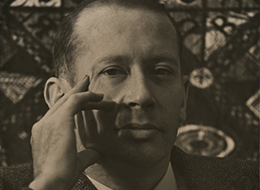
E. E. Cummings 1894–1962
Manuel Komroff (1890–1974)
Gelatin silver print, c. 1933
Read More →
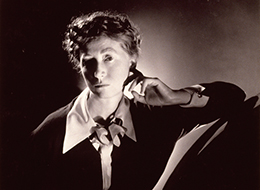
Marianne Moore 1887–1972
George Platt Lynes (1907–1955)
Gelatin silver print, 1935
Read More →
Image credits: Hilda Doolittle (detail) by Man Ray / National Portrait Gallery, Smithsonian Institution; gift of Mrs. John Schaffner / © 2012 Man Ray Trust / Artists Rights Society (ARS), NY / ADAGP, Paris William Carlos Williams (detail) by Man Ray / National Portrait Gallery, Smithsonian Institution / © 2012 Man Ray Trust / Artists Rights Society (ARS), NY / ADAGP, Paris Wallace Stevens (detail cropping) by Rollie McKenna / National Portrait Gallery, Smithsonian Institution / © Rosalie Thorne McKenna Foundation, Courtesy Center for Creative Photography, University of Arizona Foundation Alan Tate (detail) by Hans Namuth / National Portrait Gallery, Smithsonian Institution; gift of the Estate of Hans Namuth / © Hans Namuth Ltd.
